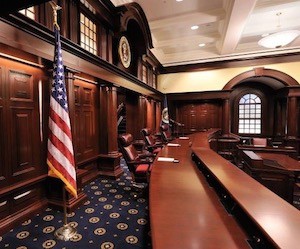 Meiresonne v. Google, Inc., (Fed. Cir. Mar. 7, 2017) (Before Prost, C.J., Lourie, and Moore, J.) (Opinion for the court, Moore, J.)
Meiresonne v. Google, Inc., (Fed. Cir. Mar. 7, 2017) (Before Prost, C.J., Lourie, and Moore, J.) (Opinion for the court, Moore, J.)
Michael Meiresonne (“Meiresonne”) appealed from the final inter partes review (“IPR”) decision of the U.S. Patent Trial and Appeal Board (“Board”). The Board held that certain claims of the underlying patent were unpatentable as obvious.
The Meiresonne patent generally relates to the listing of internet search results, more particularly to a rollover viewing area that displays descriptive text corresponding to a search result. The Board instituted review of four claims of the Meiresonne patent after Google, Inc. (“Google”) petitioned.
The Board found the claims unpatentable based on the combined teachings of two prior art references. The first disclosed all limitations except for the “rollover viewing area, ” which the second reference provided. Contrary to Meiresonne’s arguments, the Board found that a person of ordinary skill in the art would not have read the prior art references to teach away from Meiresonne’s invention. The Court identified this alleged “teach away” as the sole issue it needed to consider, and it analyzed the Board’s findings for substantial evidence.
The Federal Circuit began its analysis explaining familiar obviousness law, explaining:
A combination of known elements is likely to be obvious when it yields predictable results. KSR Int’l Co. v. Teleflex Inc., 550 U.S. 398, 416 (2007). Obviousness may be defeated if the prior art indicates that the invention would not have worked for its intended purpose or other- wise teaches away from the invention. DePuy Spine, Inc. v. Medtronic Sofamor Danek, Inc., 567 F.3d 1314, 1326 (Fed. Cir. 2009). A reference teaches away “when a person of ordinary skill, upon reading the reference, would be discouraged from following the path set out in the reference, or would be led in a direction divergent from the path that was taken” in the claim. Galderma Labs., L.P. v. Tolmar, Inc., 737 F.3d 731, 738 (Fed. Cir. 2013). A reference that “merely expresses a general preference for an alternative invention but does not criticize, discredit, or otherwise discourage investigation into” the claimed invention does not teach away. Id.
Turning to the facts of the case at hand, the Federal Circuit stated that neither prior art reference said or implied that combining their teachings, especially for the “rollover viewing area” would be “‘unreliable,’ ‘misleading,’ ‘wrong,’ or ‘inaccurate,’ and which might lead one of ordinary skill in the art to discard” the combination. Thus, the references did not discourage a person of ordinary skill in the art from making the combination. Neither reference indicated that the inclusion of descriptive text in the rollover viewing area would detract from the goal of using it to peruse data faster. Neither expressed concern that such a combination “would hinder the goal of communicating information about website links to a person browsing the internet.” Instead, the references encouraged graphical previews to help a user identify whether a link is relevant. The Court also stated that “nothing in either reference indicates that descriptive text would render [the second prior art reference’s] rollover area inoperative for its intended purpose.” No other evidence, i.e. descriptions of the references, made the combination look unworkable. Thus, the Court affirmed the Board’s conclusion that the underlying patent was obvious.
To reverse a finding of obviousness based on overlooking a “teach away,” the evidence must show that the references discouraged the combination or implied that the resulting combination would not work as described in the patent.
[Troutman-Ad]
[Troutman-About]

![[IPWatchdog Logo]](https://ipwatchdog.com/wp-content/themes/IPWatchdog%20-%202023/assets/images/temp/logo-small@2x.png)


![[Advertisement]](https://ipwatchdog.com/wp-content/uploads/2024/04/UnitedLex-May-2-2024-sidebar-700x500-1.jpg)
![[Advertisement]](https://ipwatchdog.com/wp-content/uploads/2024/04/Artificial-Intelligence-2024-REPLAY-sidebar-700x500-corrected.jpg)
![[Advertisement]](https://ipwatchdog.com/wp-content/uploads/2024/04/Patent-Litigation-Masters-2024-sidebar-700x500-1.jpg)

![[Advertisement]](https://ipwatchdog.com/wp-content/uploads/2021/12/WEBINAR-336-x-280-px.png)
![[Advertisement]](https://ipwatchdog.com/wp-content/uploads/2021/12/2021-Patent-Practice-on-Demand-recorded-Feb-2021-336-x-280.jpg)
![[Advertisement]](https://ipwatchdog.com/wp-content/uploads/2021/12/Ad-4-The-Invent-Patent-System™.png)






Join the Discussion
No comments yet.